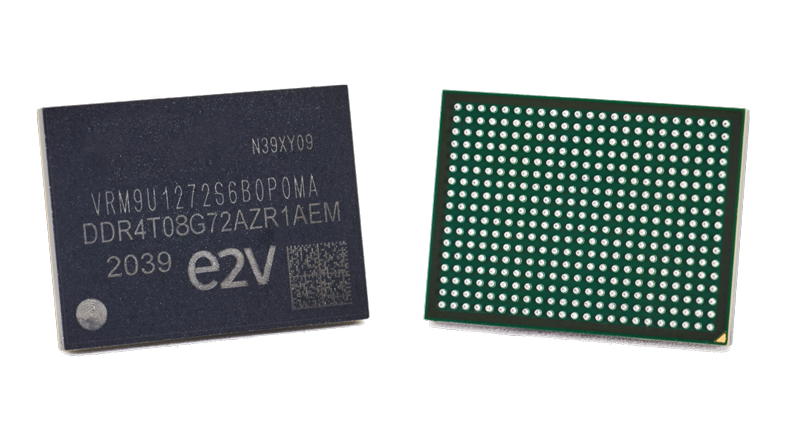Space Edge Computing Boosted by Teledyne e2v’s new 8 GB DDR4 Memory
Teledyne e2v today announces the introduction of an 8 GB Space DDR4 memory as part of its edge computing solutions for space. This announcement follows the successful conclusion of all internal de-risking activities, including Radiation/Latch-Up tests and preliminary Industrialization checks. As demand for compact, high-density memories surge, Teledyne e2v stresses that its latest memory chip is compatible with all contemporary high-end space processing components. The list includes processors from AMD/Xilinx VERSAL® ACAP, space FPGAs, MPSOCs, Microchip RT PolarFire®, together with many proprietary ASICs.
Ultra-fast, high-density 8 GB space DDR4 memory offers the same form factor and pin-to-pin compatibility to the earlier 4 GB option – making it the ideal enhancement for next generation spaceborne developments.
Modern satellite payloads store and shift vast amounts of data minute by minute, hour by hour; many missions, such as Earth observation, require tens of GB of storage. Consequently, these missions stress existing memory solutions regarding their bandwidth, access time, power consumption, physical size, and storage capacity. Furthermore, Micro- and Cube-Sats have specific size and power constraints, yet OEMs seek increasingly high memory bandwidths for real-time processing.
‘Fast DDR4 memory is a critical resource in modern data-intensive satellite systems. Complementing the 4 GB space DDR4, the new 8 GB version with FMs scheduled for 2024 doubles storage density in the same compact, pin-compatible form factor. Furthermore, with the specific temperature grades proposed and the qualification variants up to NASA level 1, Teledyne e2v offers the most ruggedized and versatile space memory product.’ Thomas Guillemain, Marketing & Business Development Manager, Data processing products.
The new 8 GB DDR4 memory is single-event latch-up (SEL) immune beyond 60 MeV.cm²/mg. Moreover, the device targets 100 krad total ionizing dose (TID) and SEU/SEE characterization beyond 60 MeV.cm²/mg. Physically, the 8 GB size matches the previous 4 GB version (i.e., 15mm x 20mm x 1.92mm) – doubling storage density yet maintaining pinout compatibility. In addition, the memory supports a transfer rate of 2400 MT/s.
What is de-risking?
De-risking describes the internal engineering performed on new silicon products to validate their suitability for resilient space operations. In addition, space-grade components must pass a barrage of performance tests that stretch the target product’s operating envelope.

